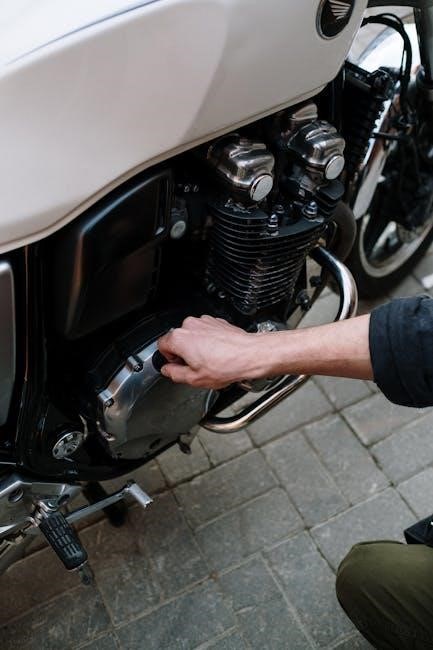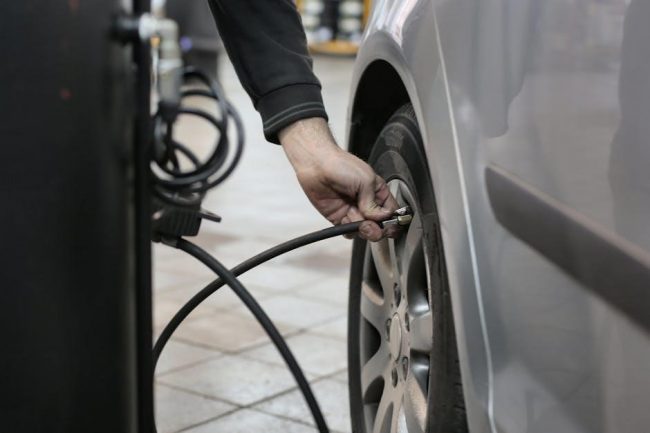Manual and power brakes share the same purpose but differ in operation. Power brakes use assistive systems for easier actuation, especially in heavier vehicles, requiring proper sizing and considering weight and tire size for optimal performance.
Overview of Manual Brakes
Manual brakes operate solely based on the driver’s physical input, relying on mechanical linkages to engage the braking system. Unlike power brakes, they do not use assistive systems, making them simpler and more reliable in situations where no external power is available. Manual brakes are often found in lighter vehicles or applications where braking demands are less intense. They require more driver effort, especially in heavier vehicles or when stopping frequently. Their straightforward design reduces costs and maintenance needs, appealing to budget-conscious users. However, their effectiveness can be limited in scenarios requiring rapid or high-capacity braking, such as with larger tires or heavier loads, where power brakes are generally more efficient.
Overview of Power Brakes
Power brakes utilize assistive systems, such as vacuum or hydraulic amplifiers, to enhance braking efficiency and reduce driver effort. They are particularly advantageous in heavier vehicles or those with larger tires, where manual braking would be insufficient. Power brakes excel in dynamic stopping scenarios, absorbing kinetic energy effectively to bring vehicles to a halt quickly. Proper sizing of power brakes is crucial, as they must account for the vehicle’s weight and rotational mass to ensure optimal performance. This makes them ideal for modern vehicles requiring high braking capacity. Their design allows for smoother and more consistent braking, reducing driver fatigue during frequent stops. However, they rely on external power sources, which can be a limitation in certain situations.
Operating Principles
Manual brakes rely solely on driver input without assistive systems, while power brakes use vacuum or hydraulic amplifiers to enhance stopping power and absorb kinetic energy dynamically.
How Manual Brakes Work
Manual brakes operate solely on mechanical input, relying on the driver’s physical effort to engage the braking system. When the brake pedal is pressed, it directly activates the master cylinder, which sends hydraulic pressure through brake lines to the wheel cylinders. This pressure forces the brake pads or shoes against the rotors or drums, creating friction to slow or stop the vehicle. Unlike power brakes, manual systems lack assistive components, requiring more driver strength, especially in heavier vehicles. Proper sizing and consideration of weight and tire size are crucial for effective stopping power, as manual brakes must dynamically absorb kinetic energy without additional amplification.

How Power Brakes Work
Power brakes utilize an assistive system to amplify the driver’s braking input, reducing the effort required to stop the vehicle. When the brake pedal is pressed, a vacuum booster or hydraulic pump enhances the pressure applied to the master cylinder. This amplified pressure is then transmitted through brake lines to the calipers or wheel cylinders, which engage the brake pads or shoes against the rotors or drums. The assistive mechanism allows for smoother and more efficient braking, especially in heavier vehicles or those with larger tires. Proper sizing of power brakes is critical to ensure they can dynamically absorb kinetic energy and maintain consistent stopping performance under various load conditions.
Key Components
Manual brakes employ a master cylinder, brake lines, and mechanical linkages, whereas power brakes incorporate a vacuum booster and servo for efficient hydraulic fluid-assisted braking systems.
Components of Manual Braking Systems
Manual braking systems rely on a master cylinder, brake lines, and mechanical linkages to transmit pressure from the brake pedal to the brake calipers or wheel cylinders. The master cylinder converts non-hydraulic pedal pressure into hydraulic pressure, which is then distributed through brake lines to the wheels. Mechanical linkages, such as rods and levers, connect the brake pedal to the master cylinder, ensuring direct control. These components work together to apply friction to the brake rotors or drums, slowing or stopping the vehicle. Proper sizing and maintenance of these parts are critical for reliable braking performance, especially in heavier vehicles or those with larger tires, where increased stopping power is essential.
Components of Power Braking Systems
Power braking systems incorporate a master cylinder, servo or vacuum booster, anti-lock braking system (ABS) module, electronic control unit (ECU), and high-pressure pump. The master cylinder converts pedal input into hydraulic pressure, amplified by the booster for reduced effort. The ABS module prevents wheel lockup by modulating brake pressure, while the ECU processes data from sensors to optimize braking performance. In modern systems, electronic controls enhance responsiveness and safety. Proper sizing of these components is crucial, especially in heavier vehicles, to ensure adequate stopping power. Maintenance involves checking fluid levels, booster functionality, and sensor accuracy to maintain reliability and safety. These components work synergistically to provide efficient and controlled braking in various driving conditions.

Advantages and Disadvantages
Manual brakes are reliable and simple but require more effort, while power brakes offer easier use and better performance yet are more complex and system-dependent.
Advantages of Manual Brakes
Manual brakes are highly reliable due to their simplicity, with fewer components prone to failure. They are cost-effective, lightweight, and require less maintenance compared to power brakes. Additionally, manual brakes do not rely on external power sources, making them ideal for situations where power systems may fail. Their straightforward design ensures consistent performance without the need for complex diagnostics or repairs. Furthermore, manual brakes are often preferred in lightweight vehicles or applications where simplicity and ease of operation are prioritized. Their lack of dependency on auxiliary systems also makes them a safer choice in emergencies where power assistance might be unavailable. Overall, manual brakes offer a practical, no-frills solution for braking needs.

Disadvantages of Manual Brakes
Manual brakes require significantly more physical effort to engage, making them less convenient for drivers, especially in stop-and-go traffic. They lack the assistance provided by power brakes, leading to increased stopping distances in emergency situations. This can compromise safety, particularly in heavier vehicles or when towing. Manual brakes are also less effective in modern vehicles with advanced safety systems, as they do not integrate with features like regenerative braking or electronic stability control. Additionally, their reliance on manual force makes them less accessible for drivers with physical limitations. Overall, while manual brakes are reliable, their lack of assistive technology and increased effort make them less practical for many modern applications compared to power brakes.
Advantages of Power Brakes
Power brakes offer significant advantages over manual systems, primarily in ease of use and performance. They reduce the physical effort required to brake, making driving less tiring and more accessible for all drivers. Power brakes enhance safety by providing shorter stopping distances, especially in emergency situations, and improve control during sudden stops. They are particularly beneficial in heavier vehicles or when towing, as they compensate for increased weight and inertia. Modern power brakes often integrate with advanced safety systems, such as ABS and electronic stability control, further improving braking efficiency. Their assistive technology ensures consistent and reliable performance, making them a preferred choice for modern vehicles. Overall, power brakes deliver superior convenience, safety, and efficiency compared to manual systems.
Disadvantages of Power Brakes
Power brakes have several drawbacks, including increased complexity and cost compared to manual systems. They rely on external power sources, such as engines or batteries, which can fail, leading to loss of braking assistance. This dependency on auxiliary systems makes them less reliable in emergencies where power is lost. Additionally, power brakes require more maintenance due to their complex components, such as vacuum boosters or hydraulic pumps, which can malfunction. Their higher cost and weight also make them less practical for smaller or lightweight vehicles. Furthermore, the added energy consumption to power these systems can slightly reduce fuel efficiency. Overall, while power brakes offer convenience, their reliance on external power and higher maintenance needs are notable disadvantages compared to manual brakes.
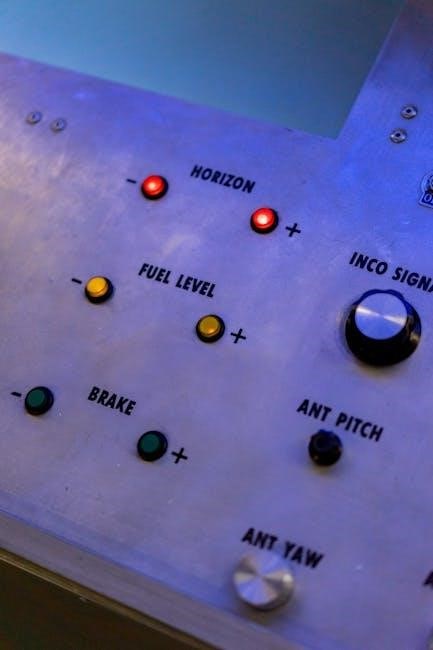
Applications and Use Cases
Manual brakes are ideal for lightweight vehicles and specific applications requiring simplicity, while power brakes are essential for heavier vehicles and situations demanding increased braking capacity.
Manual Brakes in Modern Vehicles
Manual brakes remain relevant in lightweight vehicles and niche applications, offering simplicity and reliability. They are often used in motorcycles, lightweight cars, and industrial machinery due to their straightforward design. Modern vehicles with manual brakes benefit from reduced complexity and lower maintenance costs. However, they are less common in heavier vehicles, where power brakes are preferred for enhanced stopping power. Despite this, manual brakes are still valued in scenarios requiring precise control, such as racing or off-road vehicles. Their simplicity makes them a cost-effective solution for specific use cases, ensuring they remain a viable option in certain modern automotive applications.
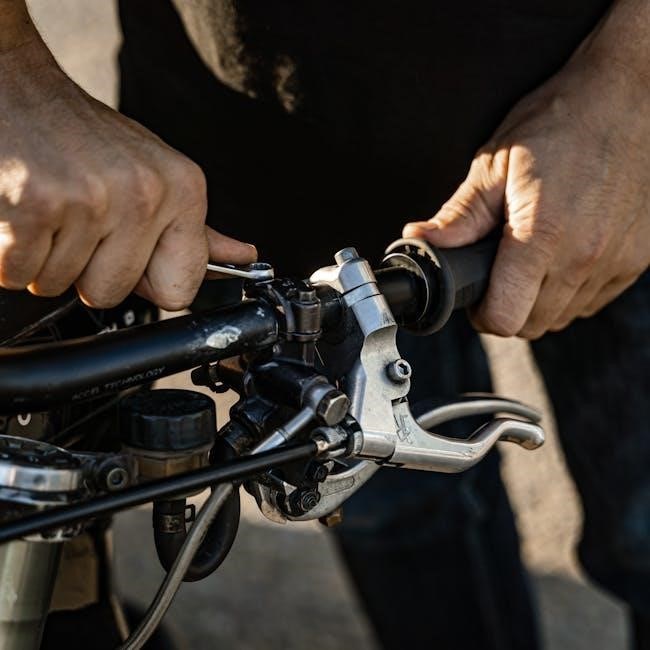
Power Brakes in Modern Vehicles
Power brakes are widely used in modern vehicles due to their enhanced stopping power and ease of use. They rely on assistive systems, such as vacuum boosters or hydraulic multipliers, to reduce pedal effort. Modern power brakes are essential for heavier vehicles, where manual braking would be ineffective. Recent trends show an increasing preference for upgrading to high-performance power brake kits, such as the Wilwood Superlite brake kit, which offers improved braking capacity. These systems are particularly beneficial for vehicles with larger tires or increased weight, as they provide the necessary stopping power. Proper sizing and maintenance of power brakes are critical to ensure optimal performance and safety, especially in dynamic stopping scenarios where kinetic energy absorption is crucial.
Maintenance and Repair
Regular maintenance is crucial for both manual and power brakes to ensure optimal performance and safety, with manual brakes needing lubrication and power brakes requiring fluid checks and booster inspections, while proper sizing and upgrades enhance braking capacity for heavier vehicles or larger tires.
Maintenance Requirements for Manual Brakes
Manual brakes require regular inspections to ensure optimal performance. Brake pads and shoes should be checked for wear and replaced when necessary. The brake fluid level must be monitored, though manual systems typically require less fluid maintenance compared to power brakes. Proper lubrication of moving parts, such as pivot pins and linkages, is essential to prevent corrosion and ensure smooth operation. Additionally, cables and linkages should be inspected for damage or fraying, as they are critical to the system’s functionality. Over time, manual brakes may need adjustments to maintain proper clearance between pads and rotors. Failure to address these maintenance tasks can lead to reduced braking efficiency and potential safety hazards. Regular servicing ensures reliable stopping power and extends the lifespan of the braking system.
Maintenance Requirements for Power Brakes
Power brakes require consistent maintenance to ensure reliable performance. The power booster and master cylinder must be inspected for leaks or damage, as these components are critical to the system’s functionality. Brake fluid levels should be checked regularly, and the fluid replaced as recommended to prevent contamination and corrosion. Vacuum lines and hoses connected to the power booster need to be examined for cracks or damage, as any leaks can reduce braking efficiency. Additionally, the brake pads and rotors should be monitored for wear, similar to manual systems. Professional servicing is often recommended for power brake systems due to their complexity. Neglecting maintenance can lead to reduced braking power and potential system failure, emphasizing the importance of regular checks to ensure safety and optimal performance.
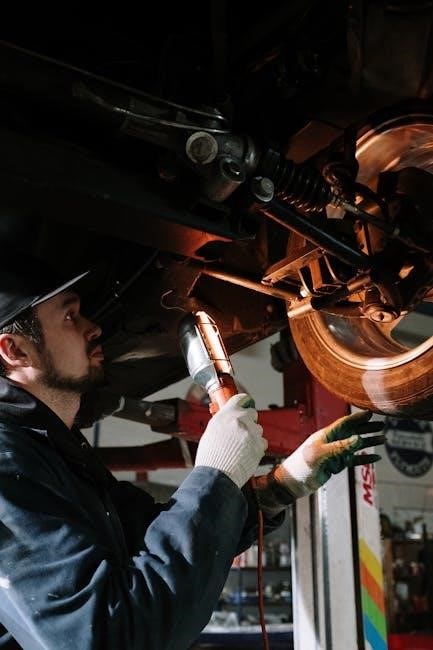
Cost Considerations
Manual brakes are cost-effective and simpler, while power brakes have higher initial costs due to components like power boosters but offer enhanced performance for heavier vehicles.
Cost of Manual Brake Systems
Manual brake systems are generally more affordable than power brakes due to their simplicity and fewer components. They require less initial investment and maintenance, as they lack complex parts like power boosters or vacuum assist systems. This makes them a cost-effective option for lighter vehicles or applications where braking demands are less intensive. Additionally, manual brakes often have lower repair costs since they involve fewer mechanical elements that could fail. Their straightforward design also reduces the need for specialized tools or labor, further lowering overall expenses. This affordability makes manual brakes a practical choice for budget-conscious drivers or vehicles with minimal weight and performance requirements.
Cost of Power Brake Systems
Power brake systems are typically more expensive than manual brakes due to their complex components and advanced technology. The initial cost includes power boosters, master cylinders, and servo-assisted systems, which are not required in manual setups. Maintenance costs are also higher because these systems involve more parts that can wear out or fail, such as vacuum pumps or hydraulic lines. Additionally, repairs often require specialized tools and labor, increasing overall expenses. However, the improved braking performance and safety they provide make them a worthwhile investment for heavier vehicles or those requiring enhanced stopping power. Despite the higher costs, power brakes remain a standard choice for modern vehicles due to their reliability and efficiency in demanding conditions.

Future Trends
Future trends in braking systems focus on advancements in manual and power brake technologies, enhancing efficiency, safety, and integration with modern vehicle systems for improved performance and reliability.
Advancements in Manual Brake Technology
Recent advancements in manual brake technology focus on improving efficiency and durability. High-performance brake kits, such as Wilwood Engineering’s Superlite, offer enhanced braking capacity and heat dissipation. Lightweight materials and optimized designs reduce unsprung weight, improving vehicle handling. Additionally, advancements in brake pad compounds and rotor designs provide better friction and wear resistance. Modern manual brakes are also being integrated with other systems, such as regenerative braking, to enhance overall vehicle performance. These innovations ensure manual brakes remain relevant in modern vehicles, offering reliable stopping power without the complexity of power-assisted systems. Such developments highlight the ongoing evolution of manual braking technology to meet the demands of contemporary driving conditions.
Advancements in Power Brake Technology
Power brake technology has seen significant advancements, focusing on improved performance and efficiency. Modern systems now incorporate electronic controls, such as brake-by-wire, for precise actuation and faster response times. Regenerative braking systems, often integrated with power brakes, capture and store kinetic energy, enhancing fuel efficiency. Advanced materials and designs, like high-performance brake pads and ventilated rotors, improve heat dissipation and durability. Additionally, adaptive brake systems adjust to driving conditions, providing optimal stopping power. These innovations ensure power brakes deliver superior reliability and safety, especially in heavier vehicles. Future trends include further integration with autonomous driving technologies, promising even greater advancements in braking performance and vehicle control.

Conclusion

In conclusion, manual and power brakes serve distinct purposes, each with unique advantages. Manual brakes offer simplicity and reliability, ideal for lighter applications, while power brakes provide enhanced performance and ease of use, especially in heavier vehicles. Advances in power brake technology, such as electronic controls and regenerative systems, have significantly improved efficiency and safety. Proper sizing and maintenance are crucial for optimal braking performance. Understanding these systems helps in making informed decisions for various automotive needs. As technology evolves, power brakes continue to dominate modern vehicles, offering superior capabilities and integration with advanced driving systems.
